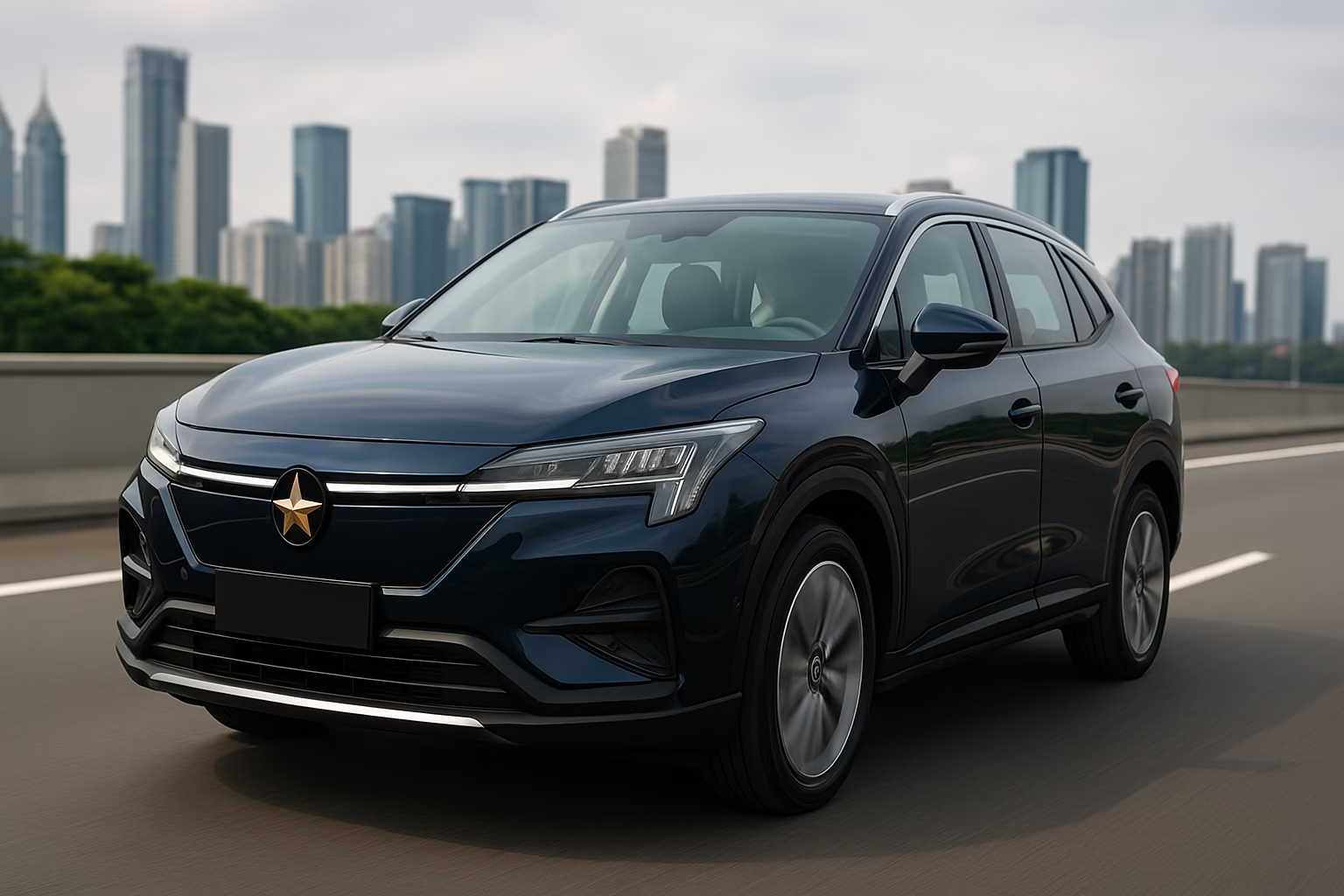In the world of modern motoring, Advanced Driver Assistance Systems (ADAS) have become a key selling point. Once the preserve of premium European sedans, features like lane‑keeping assistance, adaptive cruise control and automated parking now appear in mainstream models. A major reason for this proliferation is the influence of Chinese automotive brands. These companies have quickly gone from building budget runabouts to producing sophisticated vehicles loaded with technology. For everyday drivers in Australia, the shift matters: Chinese brands are not only disrupting price points but changing expectations for what safety and convenience features should be standard.
Rapid evolution in China’s auto industry
China’s car industry has grown at a breathtaking pace. Less than two decades ago, locally built cars were basic and often based on dated foreign designs. Today, manufacturers such as BYD, Geely, MG (owned by SAIC Motor), Nio and Xpeng are investing heavily in electronics and software. They view ADAS as a strategic area where they can leapfrog established rivals. For example, Nio’s “NAD” (Nio Autonomous Driving) platform uses high‑resolution cameras and LiDAR sensors to deliver hands‑free highway driving in China. Xpeng’s Navigation Guided Pilot (NGP) takes Tesla’s Autopilot concept and adds precise mapping data to handle complex city roads.
In Australia, we’re beginning to see the fruits of this investment. MG’s updated ZS EV, for instance, offers adaptive cruise control, lane centring and traffic‑jam assist as standard across the range, under the brand’s “MG Pilot” suite. BYD’s Atto 3, an affordable electric SUV, includes forward collision warning, automatic emergency braking, rear cross‑traffic alert and an adaptive speed limiter. These are features that, until recently, required stepping up to a mid‑spec Japanese or European model.
Competitive pricing pressures
Chinese brands are especially aggressive on price. By producing vehicles with high local content and controlling the entire supply chain – including batteries and semiconductors – they can deliver feature‑rich cars at lower costs. That pricing strategy forces competitors to include similar ADAS features to remain attractive.
For drivers, this means more choice. A buyer comparing compact SUVs might now expect adaptive cruise control and blind‑spot monitoring, even at the entry level. Where a base model once came with little more than cruise control and a reversing camera, Chinese entrants raise the bar. To stay competitive, other manufacturers often respond by making previously optional safety packages standard. The result is a virtuous cycle where ADAS adoption accelerates across the market.
Software‑centric design
Another way Chinese brands are changing the landscape is through their focus on software. Many of the new marques operate more like technology companies than traditional automakers. They employ thousands of software engineers and run over‑the‑air (OTA) update programs to improve ADAS functionality long after a vehicle leaves the showroom.
For example, BYD’s vehicles can receive OTA updates that refine lane‑keeping algorithms or add new adaptive cruise profiles. Drivers benefit because their cars remain current without visiting a dealer. Other brands are following suit: MG has pledged to introduce OTA capability on future models, while Nio uses high‑bandwidth connections to deliver new driver assistance features to cars already on the road.
For motorists, this software focus requires a shift in mindset. Instead of thinking of a vehicle as a fixed product, drivers should expect periodic updates, similar to phone or computer software. It’s wise to familiarise yourself with your vehicle’s infotainment menus, as updates may arrive automatically over Wi‑Fi or via a SIM card built into the car.
Local adaptation and challenges
While Chinese vehicles bring advanced technology at appealing prices, there are caveats. Australia’s road network, signage and driving conditions differ from those in China. Camera‑based systems may struggle with faded lane markings or unusual road layouts. Drivers should be prepared for occasional quirks and always monitor the system’s performance.
Brands are working to localise their technology. MG has refined its lane‑keeping and speed‑limit recognition algorithms for Australian roads. BYD consults with local engineers to ensure its adaptive cruise control behaves appropriately with right‑hand‑drive traffic. Nonetheless, you may notice the car misreading a speed‑limit sign or overreacting to a shadow on the road. The key is to treat ADAS as a support tool, not a replacement for your judgement.
Impact on established brands
The rapid progress of Chinese brands influences traditional carmakers. Japanese, Korean and European manufacturers are stepping up their game by bundling more driver assistance features into affordable trims. Some have formed partnerships with Chinese technology companies to access software expertise. For instance, Volvo (owned by Geely) shares development with its parent company for ADAS and autonomous functions.
This competitive pressure ultimately benefits drivers. Systems that were recently expensive add‑ons – such as 360‑degree cameras, traffic‑jam assist and advanced parking aids – are filtering down to mainstream vehicles. As brands compete on technology, there is greater motivation to make these systems intuitive and reliable.
What to watch for as a driver
If you’re considering a Chinese‑built vehicle or another model influenced by the tech race, here are some points to keep in mind:
- Learn the brand’s terminology. Every manufacturer names its ADAS suite differently. BYD’s “DiPilot,” MG’s “MG Pilot” and Great Wall Motors’ “L2 Autopilot” all refer to combinations of adaptive cruise control, lane assist and emergency braking. Understanding these names helps you compare features across brands.
- Take a thorough test drive. Try the adaptive cruise and lane‑keeping on various roads. Pay attention to how smoothly the system accelerates, brakes and centres the car in its lane.
- Explore the menus. Many settings are adjustable. You can often tweak following distance, steering assistance and alert sensitivity. Adjust them to your comfort level.
- Stay engaged. Even the most sophisticated systems require your attention. Keep your hands on the wheel and be ready to take over. If something feels off, don’t hesitate to turn the system off.
- Check for updates. Ask the dealer about software updates and how they are delivered. Regular updates can improve performance and safety.
Looking ahead
Chinese brands are likely to continue shaping the ADAS landscape. As they expand globally, they bring fresh ideas and rapid product cycles. For drivers, the influx of technology is good news when you know how to use it. Increased competition means more safety features at lower prices. The challenge lies in understanding your vehicle’s capabilities and limitations.
If you’re curious about how to use adaptive cruise control effectively, our guide to recognising brand‑specific names for these systems breaks down the terminology and explains how each version works. And if you’re wondering when it’s best to disengage driver assistance, our upcoming article on red flags to watch for will provide practical advice.

Hiran Alwis is an automotive lecturer and ADAS specialist with over 15 years of experience in diagnostics, advanced safety systems, and technical training. He founded ADAS Project to help everyday drivers and workshop technicians understand and safely use advanced driver assistance systems.

[…] further reading on the broader market dynamics, check out our article on how Chinese brands are changing the ADAS landscape for drivers, which explains why these features a…red flags to watch for when using ADAS and how to quickly disable these systems if you feel […]